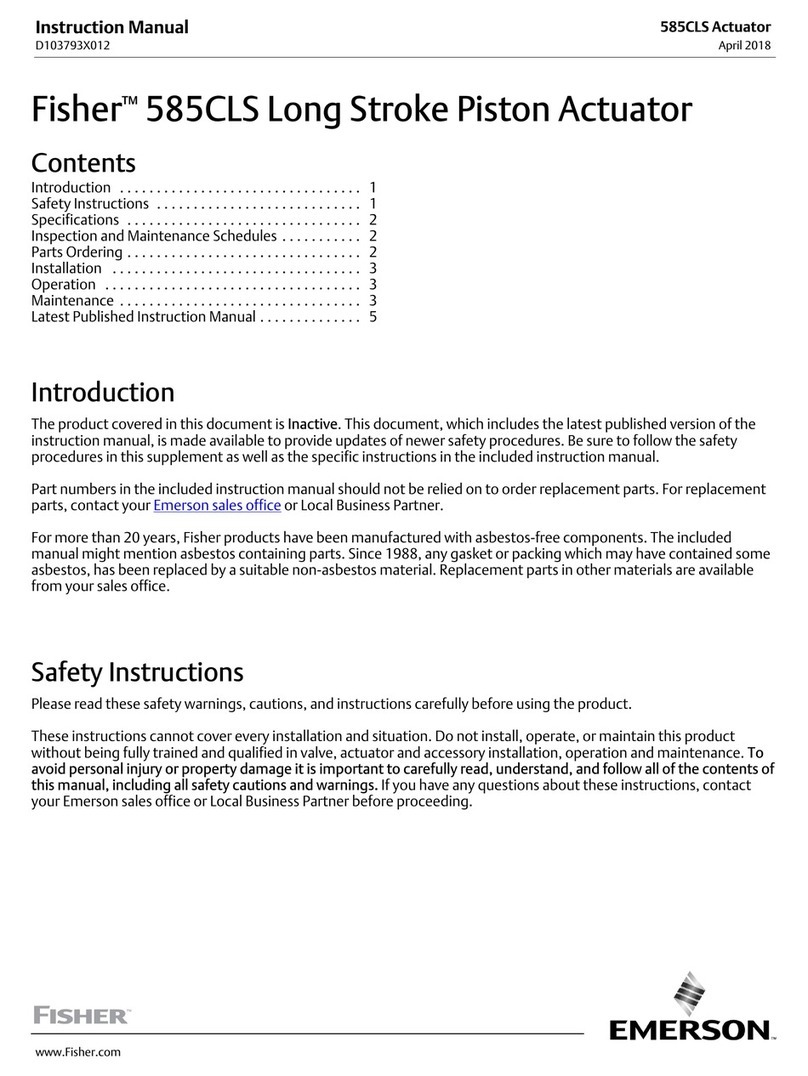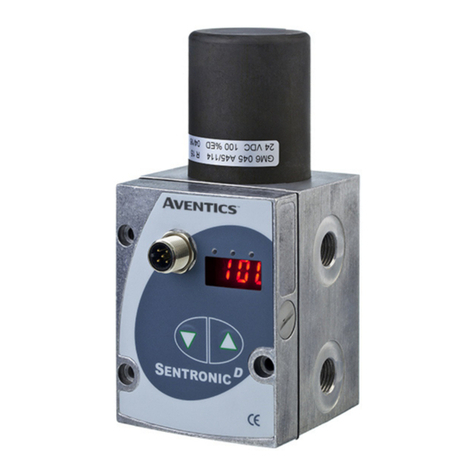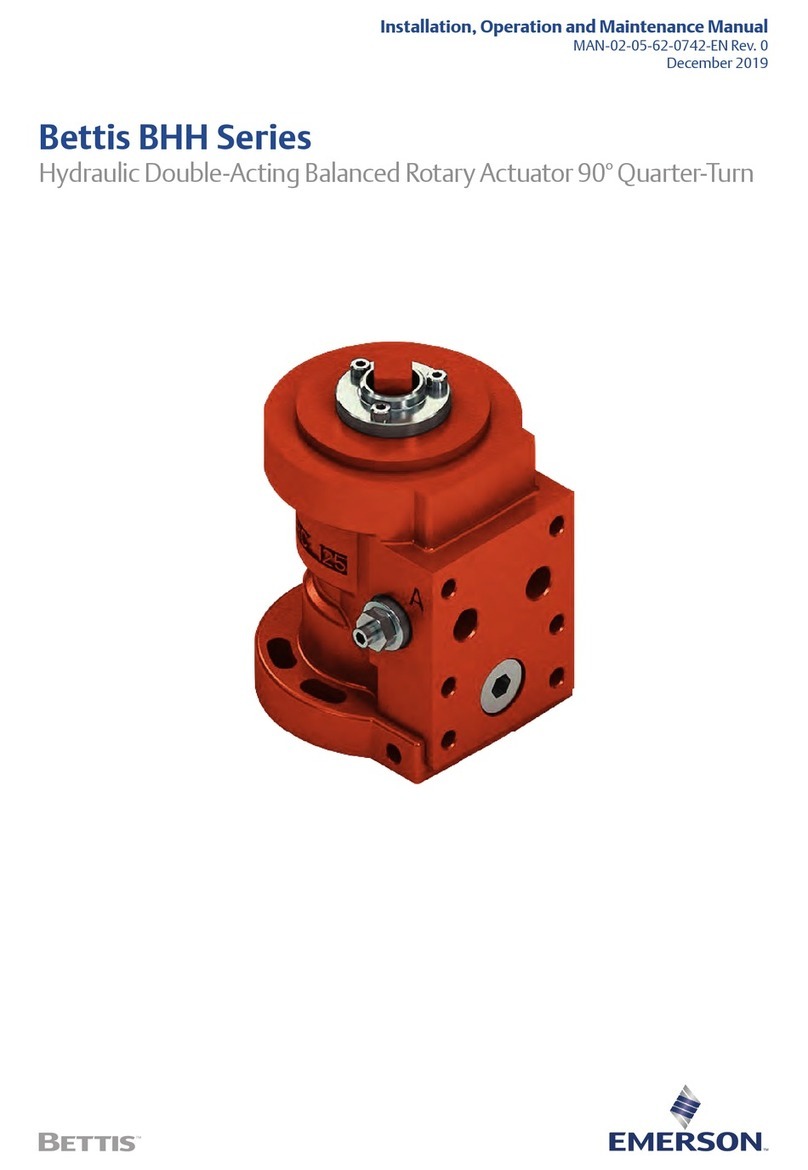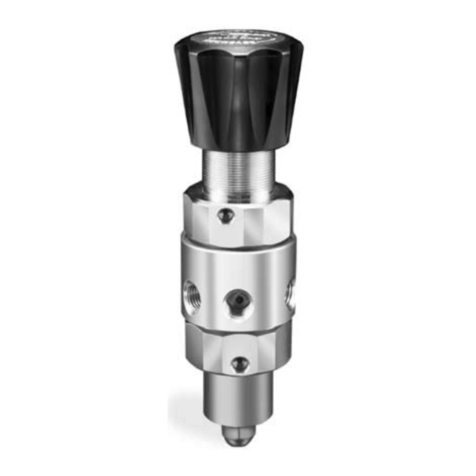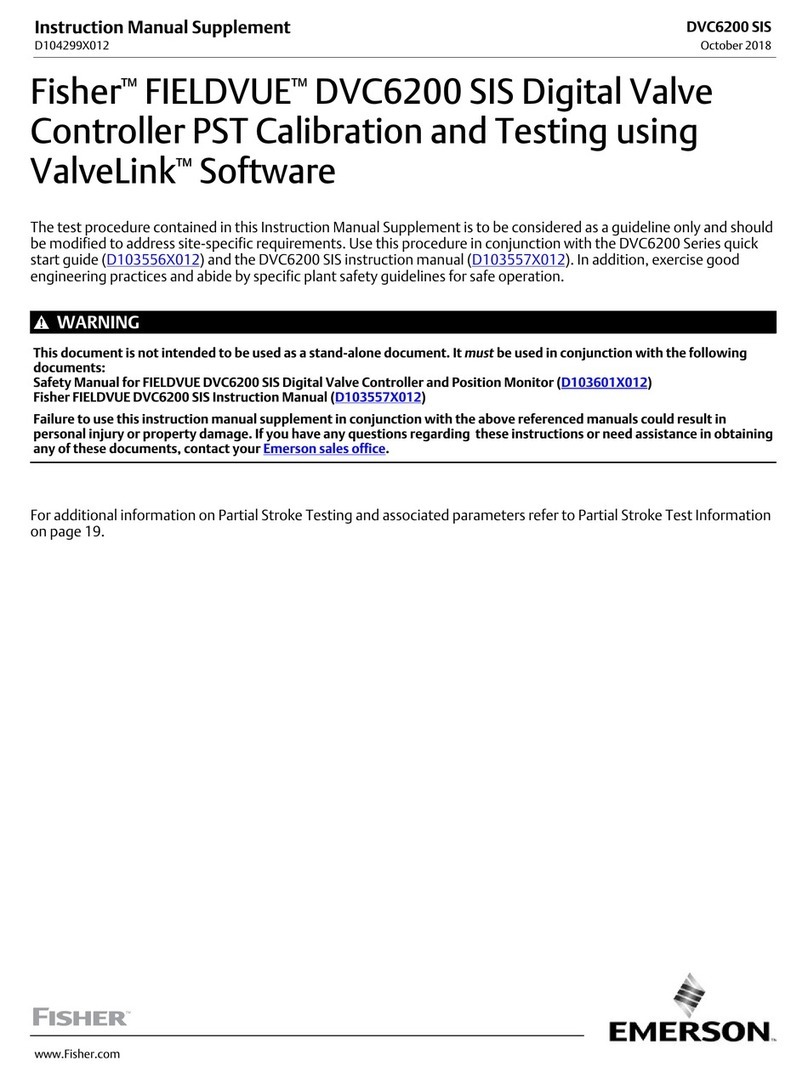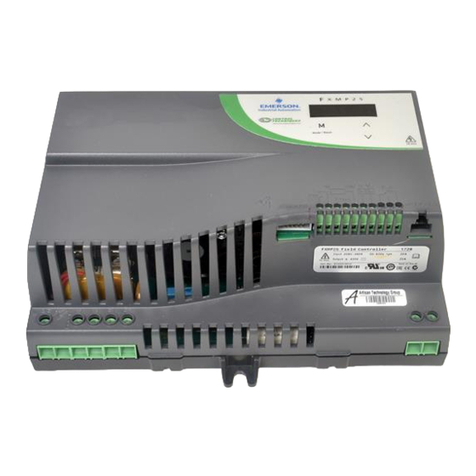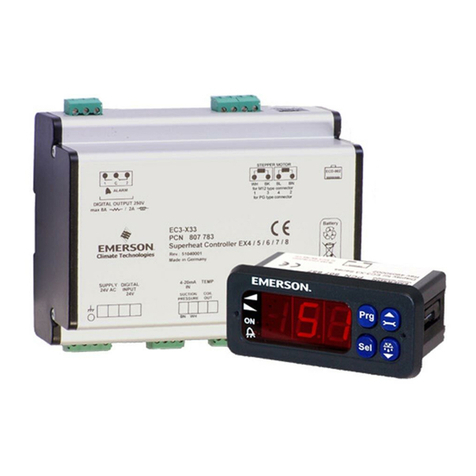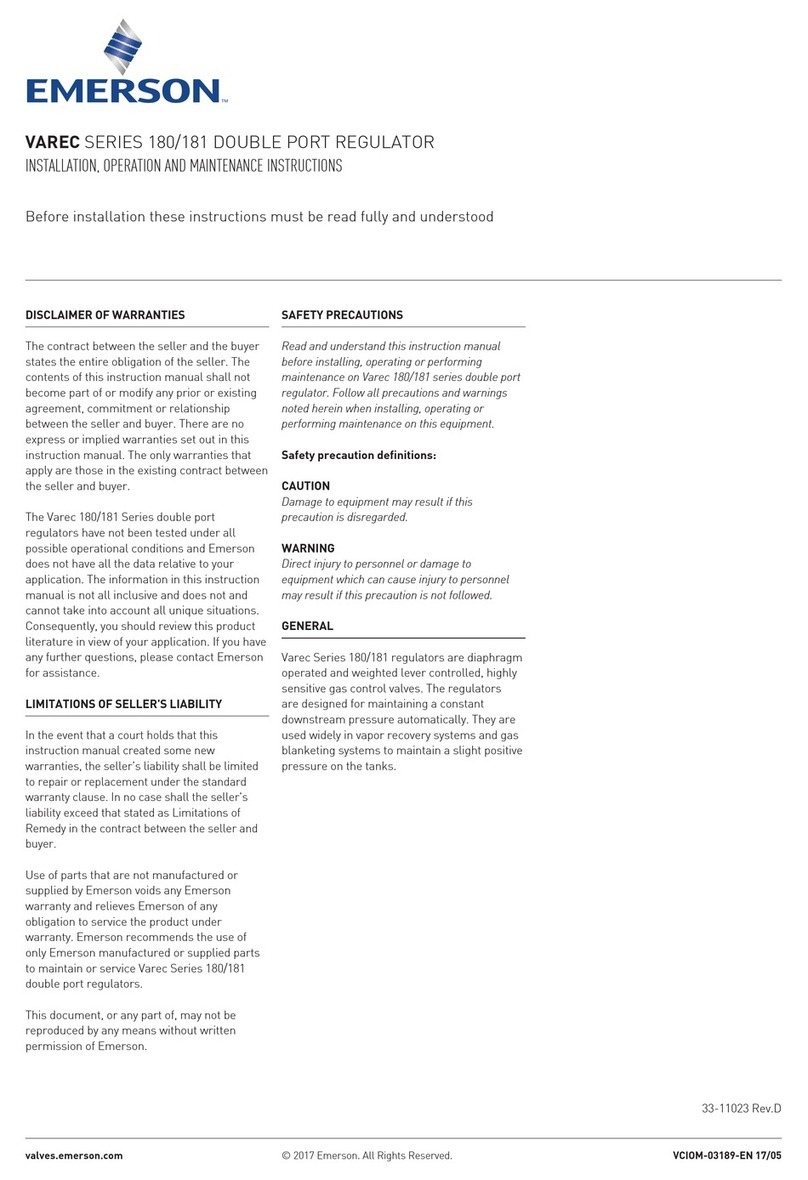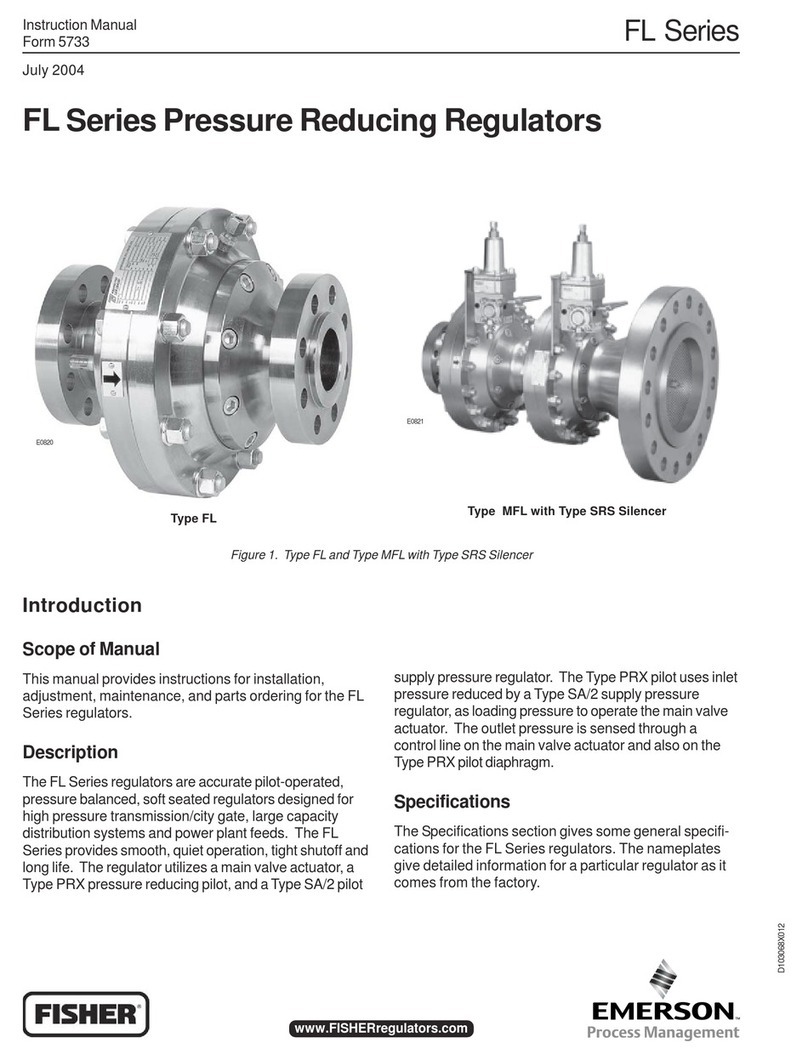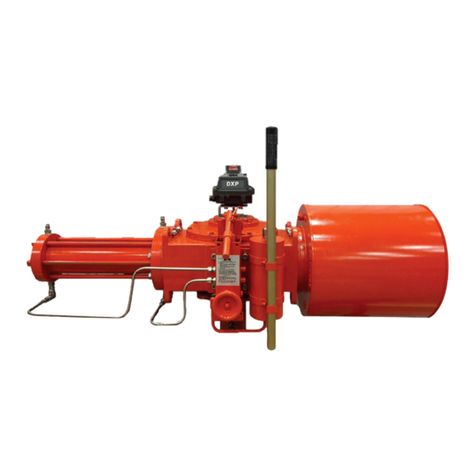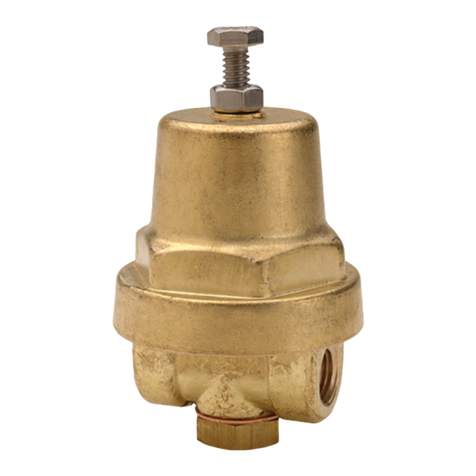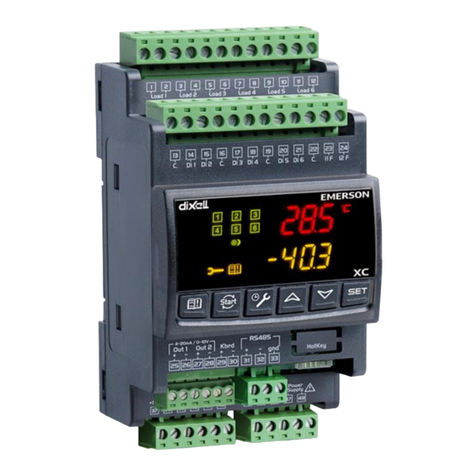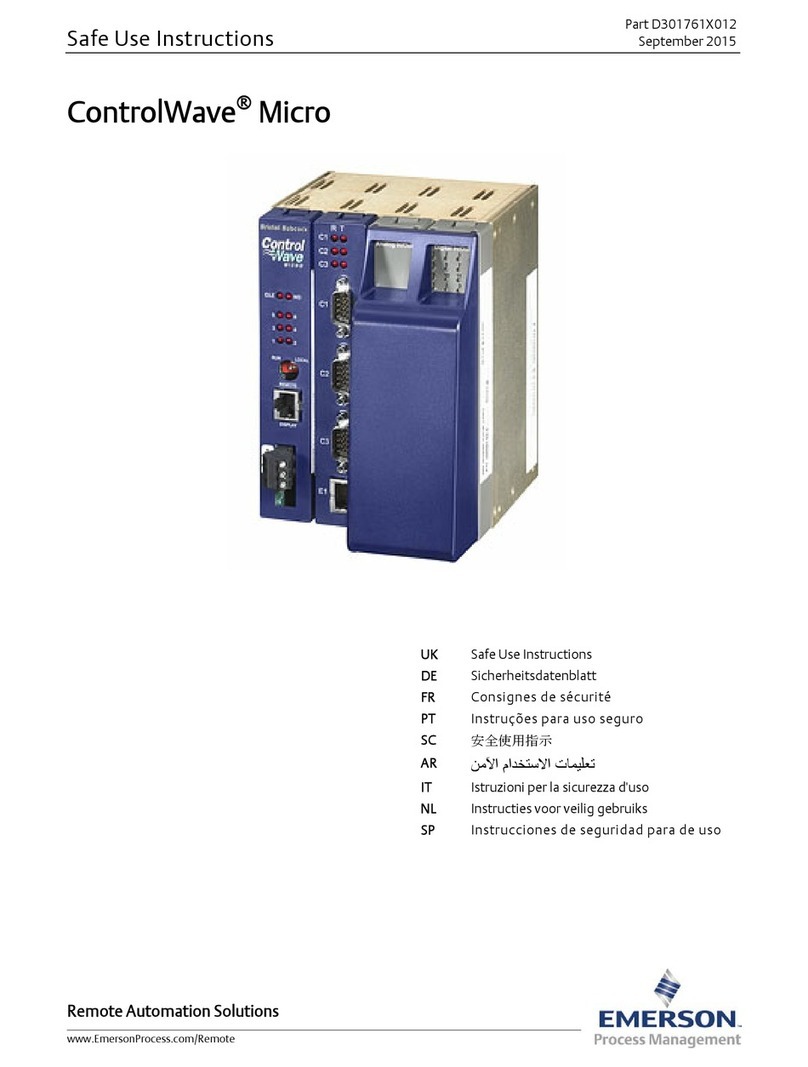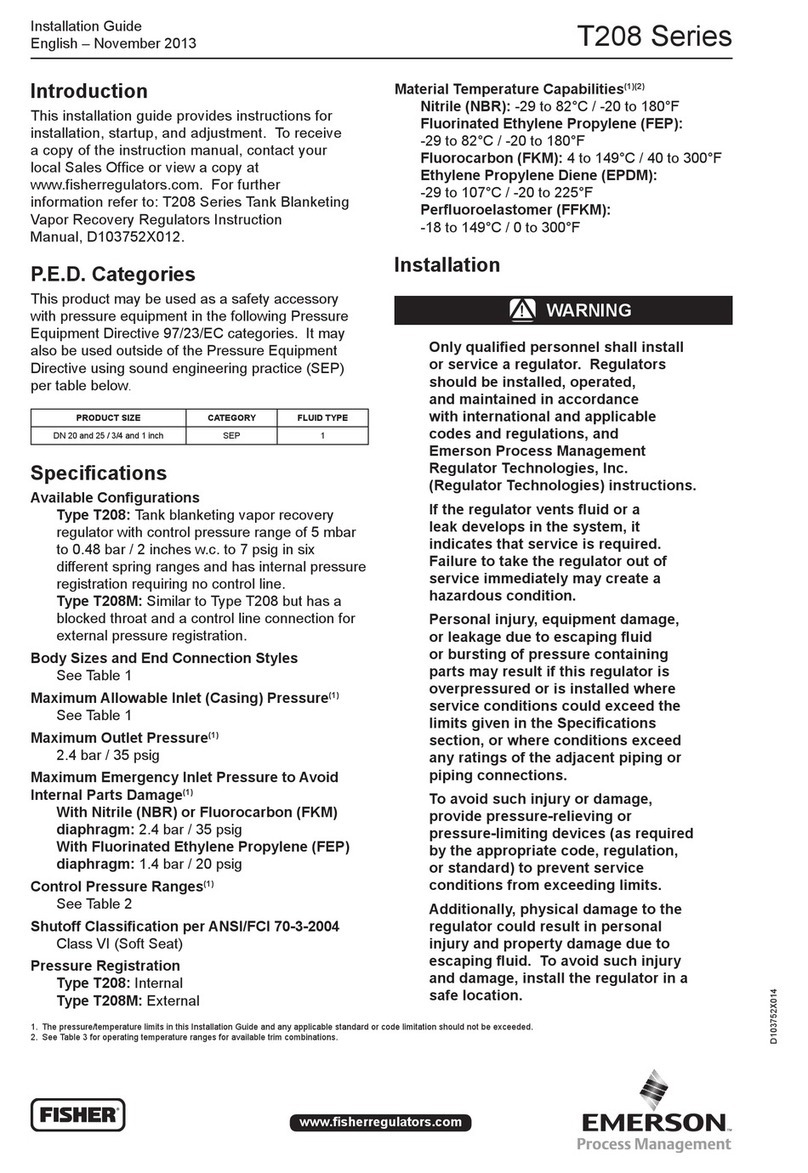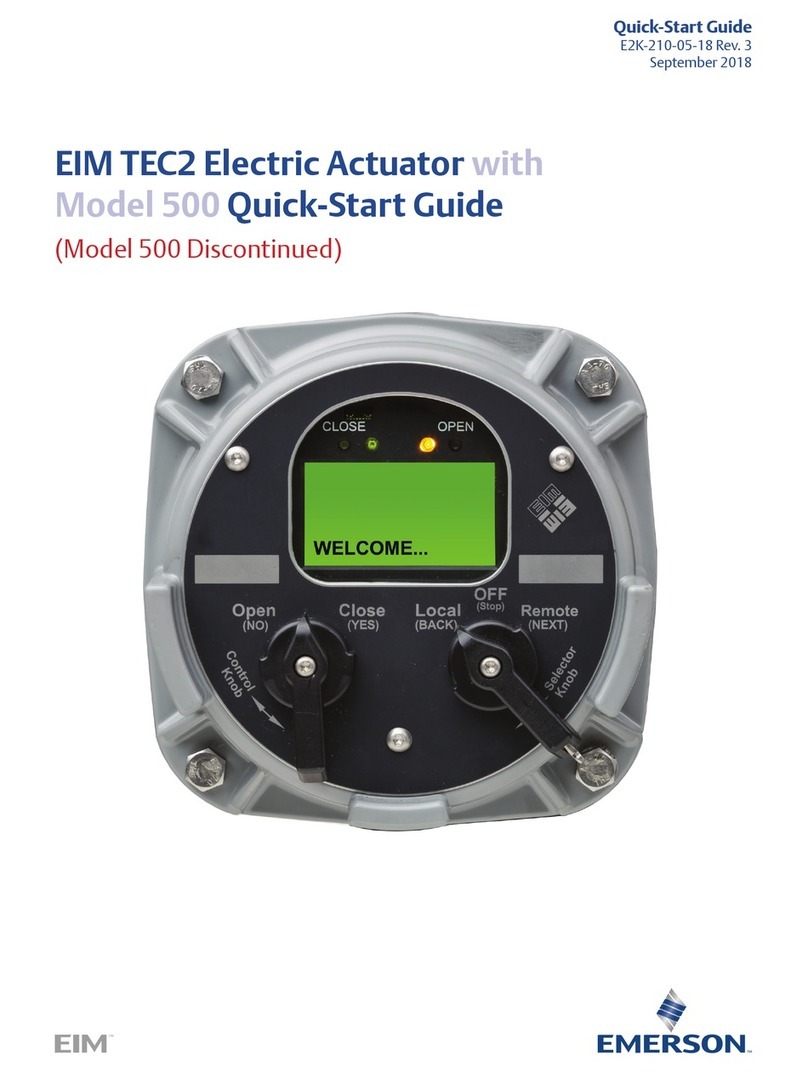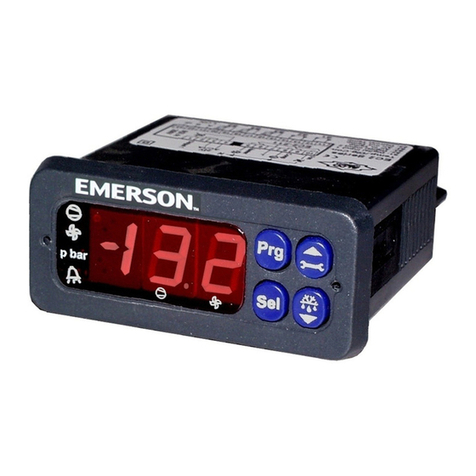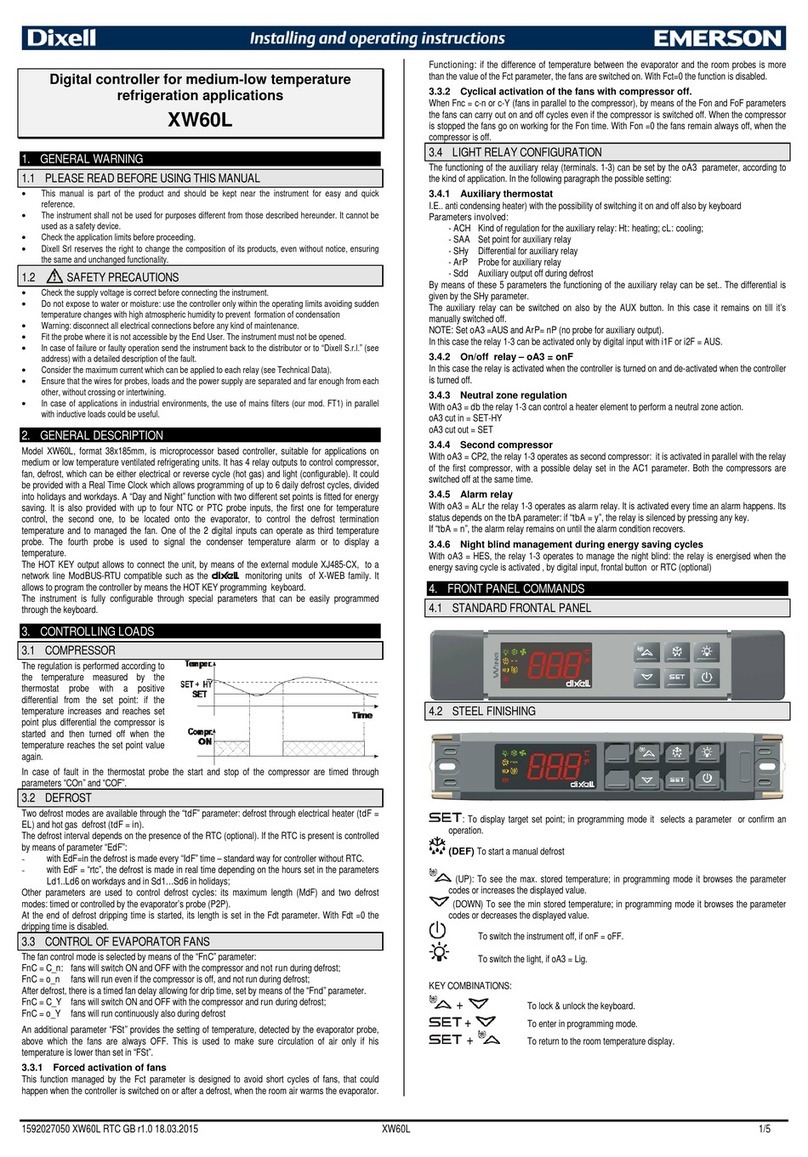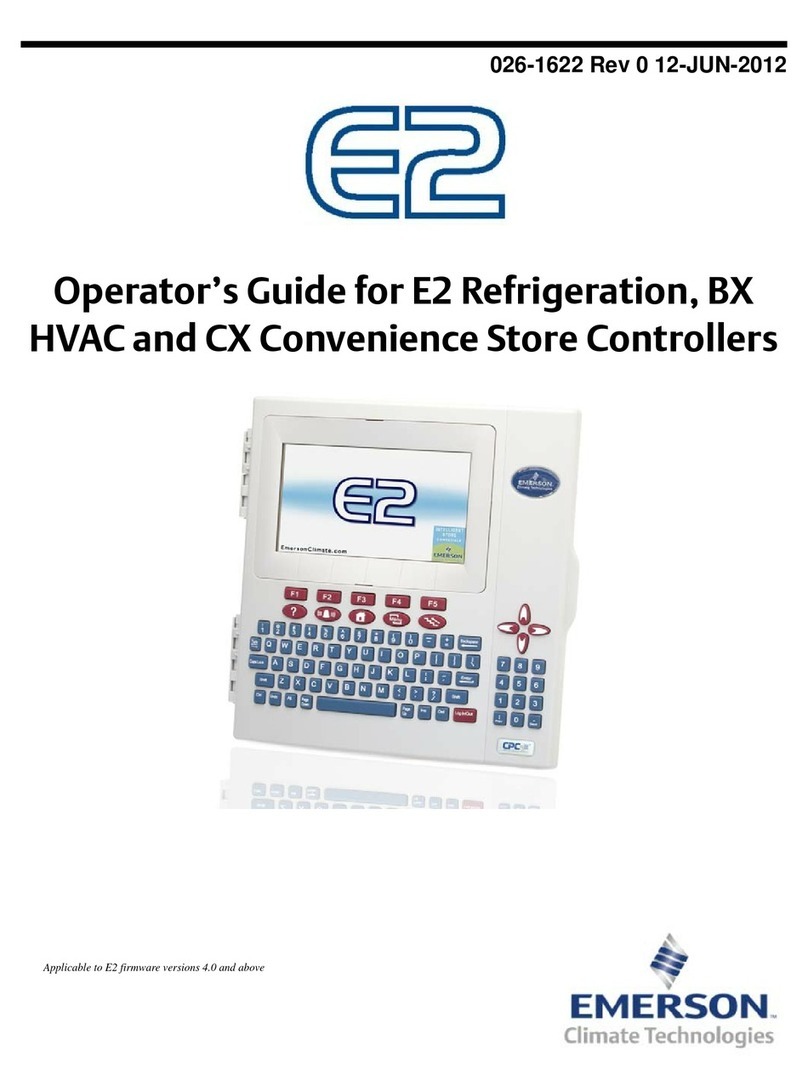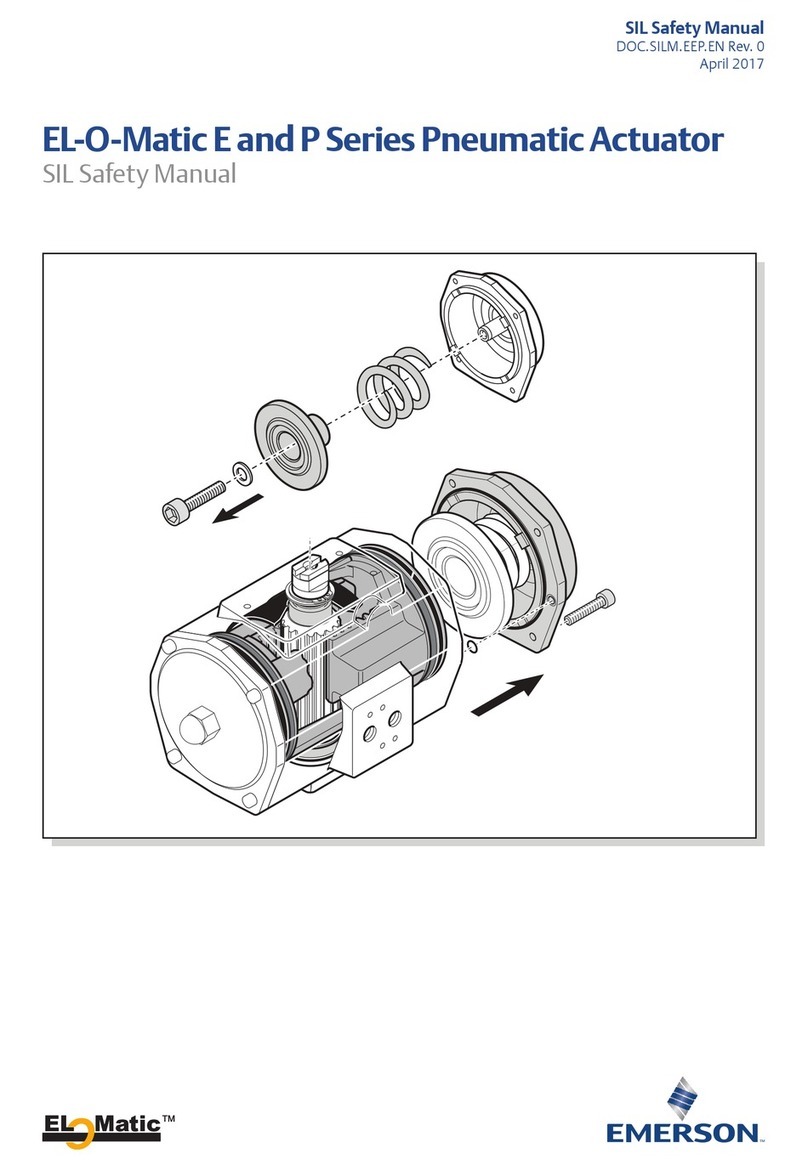WARNING
Only qualied personnel should install
or service a regulator. Regulators should
be installed, operated and maintained in
accordance with international and applicable
codes and regulations and Emerson Process
Management Regulator Technologies,
Inc. instructions.
If the regulator vents uid or a leak develops in
the system, it indicates that service is required.
Failure to take the regulator out of service
immediately may create a hazardous condition.
Personal injury, equipment damage or
leakage due to escaping uid or bursting of
pressure-containing parts may result if this
regulator is overpressured or is installed
where service conditions could exceed the
limits given in the Specications section or
where conditions exceed any ratings of the
adjacent piping or piping connections.
To avoid such injury or damage, provide
pressure-relieving or pressure-limiting
devices (as required by the appropriate code,
regulation or standard) to prevent service
conditions from exceeding limits.
Additionally, physical damage to the
regulator could result in personal injury and
property damage due to escaping uid. To
avoid such injury and damage, install the
regulator in a safe location.
Clean out all pipelines before installation of the regulator
and check to be sure the regulator has not been damaged
or has collected foreign material during shipping. For NPT
bodies, apply pipe compound to the external pipe threads.
For anged bodies, use suitable line gaskets and approved
piping and bolting practices.
Vertical installation with the actuator oriented up or down is
recommended. The unit will operate in horizontal installation
with actuator on the side, however, this could result in
premature wear of parts. Make sure that ow will be in
the same direction as that indicated by the body arrow.
Orientation of the two vents should always be down. Vents
may be rotated after regulator installation so that the vent
screens are down.
A control line must be installed to allow outlet pressure to
register on the actuator’s diaphragm. It should be installed
four to eight pipe diameters downstream of the regulator and
in an area of pipe that is free of turbulence.
Note
It is important that the regulator be installed
so that the vent hole in the spring case
is unobstructed at all times. For outdoor
installations, the regulator should be located
away from vehicular trafc and positioned
so that water, ice and other foreign materials
cannot enter the spring case through the
vent. Avoid placing the regulator beneath
eaves or downspouts and be sure it is above
the probable snow level.
Overpressure Protection
The recommended pressure limitations are stamped on the
regulator nameplate. Some type of overpressure protection
is needed if the actual inlet pressure exceeds the maximum
operating outlet pressure rating. Overpressure protection should
also be provided if the regulator inlet pressure is greater than
the safe working pressure of the downstream equipment.
Regulator operation below the maximum pressure limitations
does not preclude the possibility of damage from external
sources or debris in the line. The regulator should be
inspected for damage after any overpressure condition.
Startup
The regulator is set at the factory for the setpoint specied
on the order or at the midpoint of the spring range. The
allowable spring range is stamped on the nameplate. If a
pressure setting other than specied is desired, be sure to
change the pressure setting by following the Adjustment
section. With proper installation completed and relief
valves properly adjusted, slowly open the upstream and
downstream shutoff valves (if applicable).
Adjustment
To change the outlet pressure, loosen the locknut and
turn the adjusting screw clockwise to increase pressure or
counterclockwise to decrease pressure. Monitor the outlet
pressure with a test gauge during the adjustment. Tighten the
locknut to maintain the desired setting.
Taking Out of Service (Shutdown)

